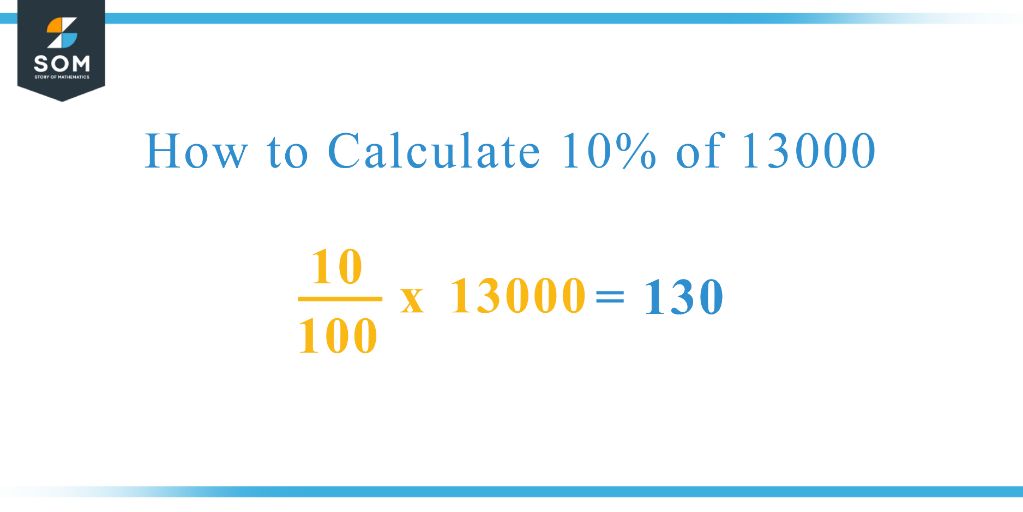What Will Be The 10% Of 1300?
Introduce the Topic
In this article, we will answer the question: What is 10% of 1300? To find the answer, we will explain what percentages are, go through the step-by-step process of calculating a percentage, and provide examples to help reinforce the concepts.
Calculating percentages is an important math skill that has many real-world applications. For instance, we use percentages to compute discounts, tax rates, tips, and more. Understanding how to calculate a percentage will allow you to easily determine 10% of any number.
Explain What a Percentage Is
A percentage is a number or ratio expressed as a fraction of 100 (see Wikipedia). For example, 25% means 25 out of 100. To calculate a percentage, the amount is divided by the total and multiplied by 100.
Percentages are used to represent parts of a whole. They allow us to calculate portions and compare amounts in an easy to understand format. Knowing how to work with percentages is an important mathematical concept used regularly in everyday life.
Explain How to Calculate a Percentage
Calculating percentages can seem tricky but it’s actually quite straightforward. The main formula for finding percentages is:
Percentage = (Amount / Total) x 100
For example, to calculate 10% of 1,300, you would take the amount (10%) and divide it by the total (100%), then multiply that by the number you want the percentage of (1,300).
To make it easier, you can first convert the percentage to a decimal. 10% as a decimal is 0.10. Then the formula becomes:
Amount = Decimal x Total
So for our example:
10% of 1,300 = 0.10 x 1,300 = 130
Therefore, 10% of 1,300 is 130.
To summarize, to find a percentage, convert the percentage to a decimal and multiply it by the total number.
Show the Step-by-Step Work
To calculate 10% of 1300, we first need to convert 10% to a decimal. 10% as a decimal is 0.10 (see Source).
Once we have 10% as a decimal, we can multiply it by 1300 to get our answer:
0.10 * 1300 = 130

So 10% of 1300 is 130 (see Source).
State the Final Answer
To find 10% of a number, we simply calculate 10% of that number. In this case, we need to find 10% of 1300.
To calculate a percentage of a number, we convert the percentage into a decimal by dividing it by 100. 10% as a decimal is 0.10 (10/100 = 0.10).
Then, we multiply the decimal form of the percentage by the original number:
0.10 x 1300 = 130
Therefore, the 10% of 1300 is 130 (according to Story of Mathematics). This shows us that 10% of 1300 is 130.
Provide Examples With Different Numbers
To further illustrate how to calculate a percentage, let’s go through some more examples using different numbers:
If you want to find 10% of 500, you would follow the same steps:
- 10% can be written as 10/100
- Multiply 10/100 by 500: (10/100) x 500 = 50
Therefore, 10% of 500 is 50.
Here are some more examples:
- 10% of 1300 is 130 (as we calculated earlier)
- 10% of 250 is 25
- 10% of 750 is 75
You can follow these same steps to calculate 10% of any number. The key is to remember that 10% is the same as 10/100. So multiply the number by 10/100 (or 0.10) to find 10%.
Explain Why This Concept is Useful
Percentages allow us to calculate proportions and fractional parts of totals. This makes them very useful in many real-world applications like finance, statistics, science, and more. Some examples of where percentages are commonly used include:
- Calculating tips, tax, discounts, markdowns, commissions, etc. in retail and services.
- Determining statistics and metrics like market share, polls, test scores, etc.
- Measuring ingredients for recipes, solutions for experiments, concentrations, etc.
- Estimating fractional changes to amounts like population growth, inflation, returns on investments, etc.
Without the ability to calculate percentages, many tasks would become extremely difficult involving fractional values. By converting fractions and ratios to percentages, the relative proportions become standardized from 0 to 100%, making them easy to understand, compare, and compute. This simplifies working with fractional parts of totals across many diverse applications.
Overall, percentages provide an indispensable tool for mathematical calculations across many fields and industries. Their usefulness arises from converting fractional values to a uniform scale from 0 to 100%, making proportions easy to grasp and work with in real-world situations.
Common Mistakes to Avoid
When calculating percentages, there are some common mistakes that people make. One of the most frequent errors is forgetting to convert the percentage to a decimal before multiplying.
For example, if you are asked to calculate 10% of 1300, you cannot simply multiply 10 x 1300. That would give you 13,000, which is incorrect. This is because 10% is not 10 – it is 0.10 when converted to a decimal.
So the proper way to do this calculation is:
- Convert 10% to 0.10
- Multiply 0.10 x 1300
This gives you the correct answer of 130.
It’s easy to forget this step of converting the percentage to a decimal. But it’s essential to do this in order to arrive at the right solution. Taking the extra moment to convert to a decimal first will help avoid careless math mistakes.
Test Your Knowledge
Here are some practice percentage problems for you to try solving on your own:
Checking your work is an important part of testing your percentage knowledge. Be sure to work through the problems step-by-step before checking the answers.
Practice problems like these help reinforce what you’ve learned about calculating percentages. The more you practice, the more comfortable you’ll become working with percents!
Summary
To recap, here are the main steps to calculate a percentage:
- Identify the total or whole number.
- Identify the part of the total you want to calculate the percentage for.
- Divide the part by the total.
- Multiply the decimal answer by 100 to convert to a percentage.
For example, if the total is 1300 and you want to find 10% of 1300, you would calculate:
10% of 1300 = (10/100) x 1300 = 0.10 x 1300 = 130
So 10% of 1300 is 130. Understanding percentages is useful for calculating discounts, tax, tips, and more in everyday math. With some practice, you’ll be able to quickly calculate percentages mentally or on paper.




